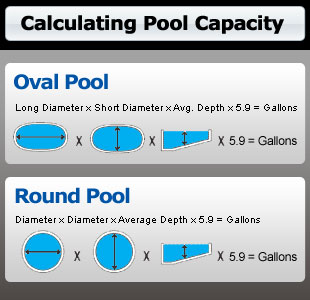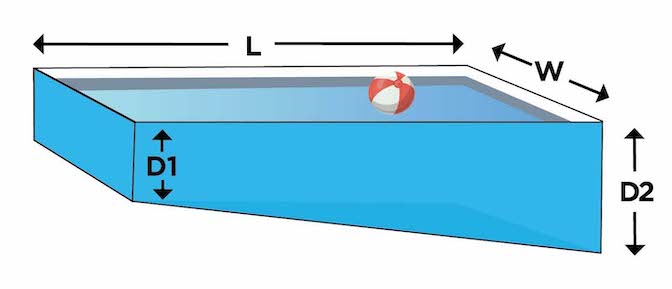Calculating the capacity of a pool is essential for various reasons, whether you are a homeowner looking to maintain your pool properly or a professional in the pool industry. Knowing the capacity of your pool helps in determining the right amount of chemicals needed for treatment, the appropriate size of the pump and filter, as well as understanding the overall water volume. In this comprehensive guide, we will walk you through the step-by-step process of calculating pool capacity.

Credit: sipoolandspa.com

Credit: www.youtube.com
Step 1: Determine the Shape of Your Pool
The first step in calculating pool capacity is to determine the shape of your pool. Pools come in various shapes such as rectangular, circular, oval, kidney-shaped, and irregular shapes. The shape of your pool will impact the method you use to calculate its capacity.
Step 2: Measure The Dimensions Of Your Pool
Next, you will need to measure the dimensions of your pool. For a rectangular pool, measure the length, width, and average depth. For a circular or oval pool, measure the diameter and average depth. For irregular shapes, break down the pool into sections and calculate the volume of each section separately.
Step 3: Calculate the Volume of Your Pool
Once you have the measurements, you can calculate the volume of your pool using the following formulas:
| Pool Shape | Formula |
|---|---|
| Rectangular | Volume = Length x Width x Average Depth |
| Circular | Volume = π x (Radius x Radius) x Average Depth |
| Oval | Volume = π x (Radius1 x Radius2) x Average Depth |
For irregular shapes, calculate the volume of each section and add them together to get the total volume of the pool.
Step 4: Convert Volume to Gallons
After calculating the volume of your pool, you will need to convert it to gallons. The formula for converting cubic feet to gallons is:
Multiply the volume of your pool in cubic feet by 7.48 to get the total capacity of your pool in gallons.
Step 5: Consider the Water Level
It is important to note that the water level in your pool will affect its capacity. If the water level is not at the recommended level, you may need to adjust your calculations accordingly. Ensure the water level is consistent before calculating the pool capacity.
Once you have completed the calculations, it is crucial to verify your results to ensure accuracy. Double-check the measurements and formulas used to calculate the pool capacity to avoid any errors.
If you are unsure about any step in the calculation process or if your pool has a complex shape, it is advisable to seek professional help. Pool experts and technicians can assist you in accurately calculating the capacity of your pool.
Calculating the capacity of your pool is a fundamental aspect of pool maintenance and management. By following the steps outlined in this guide, you can accurately determine the volume of your pool, which is essential for proper chemical treatment, equipment sizing, and overall pool care. Remember to regularly check and update the capacity calculations to ensure the optimal functioning of your pool.





